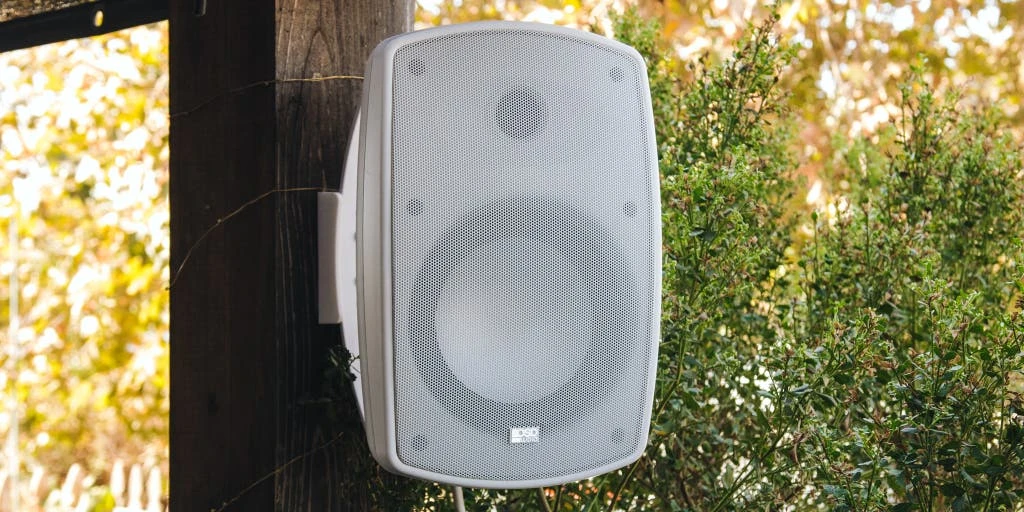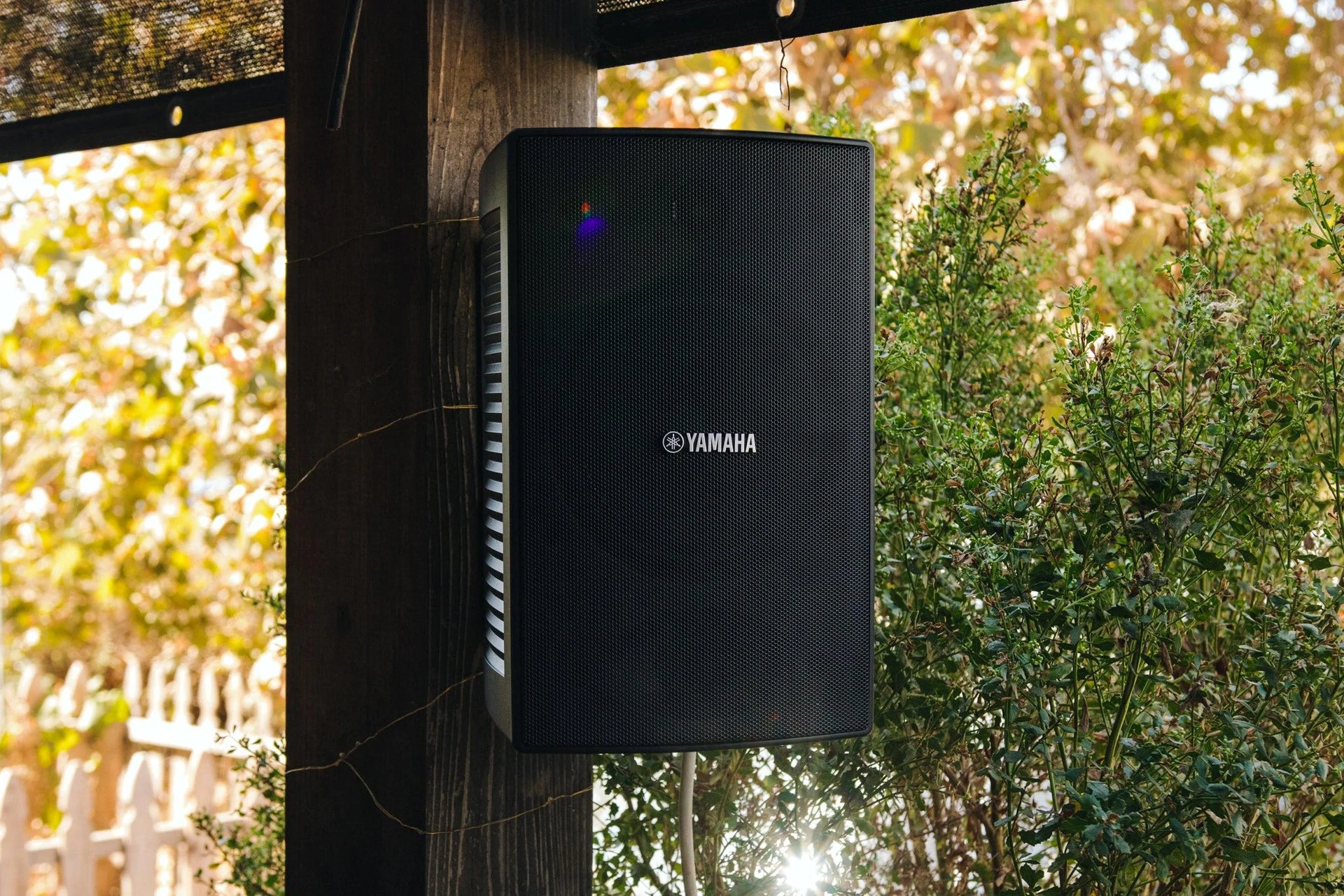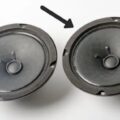When it comes to setting up patio speakers, there are a few things to consider in order to achieve the best possible sound quality. There are two types of outdoor speakers: active and passive. Active speakers are easier to set up as they can be plugged in and played right out of the box. They also come with Bluetooth capabilities, allowing them to wirelessly sync with any compatible source. Passive speakers, on the other hand, will require an amplifier or receiver to power them, as well as an outdoor-grade speaker wire to connect the two.
Once you have your speakers, it’s important to determine the optimal placement for them. Generally, you want to separate your speakers as much as possible, but no more than 20 feet from one another. Try to point each speaker toward a central point where the optimal sound will converge. For spaces between 200 and 400 square feet, two speakers should suffice. A pair of 60-watt patio speakers installed under eaves 20 feet apart will give you great coverage in areas less than 300 square feet. For 300 to 500 square feet, look for 80 to 100-watt speakers; 150 watts to 175-watt speakers will cover 600 to 800 square feet with clear, sharp music sound at soft volumes.
Audio experts recommend mounting outdoor speakers about ten feet high and ten feet apart, tilted slightly downward, for optimal sound. It’s also important to be precise in determining how much speaker wire you’ll need, so you don’t run any more than you have to. Excess wire takes away from the quality of sound.
When it comes to connecting your speakers to a source, Bluetooth is the easiest option. However, if you’re using passive speakers, you’ll need to connect them to an amplifier or receiver. Make sure to choose an amplifier or receiver that matches the wattage of your speakers to ensure optimal performance.
Setting up patio speakers requires careful consideration of placement, wiring, and source connection. With the right setup, you can enjoy clear, sharp music sounds at soft volumes, perfect for relaxing outdoors.

Connecting Outdoor Speakers
To connect your outdoor speakers, it will depend on whether you have active or passive outdoor speakers. If you have active outdoor speakers, you can simply plug them in and play right out of the box. Most active outdoor speakers come equipped with Bluetooth connectivity, allowing for wireless syncing to any compatible source.
However, if you have passive outdoor speakers, you will need an amplifier or receiver to power them. Additionally, you will need an outdoor-grade speaker wire to connect the speakers to the amplifier or receiver.
To summarize, for active outdoor speakers, you can connect them wirelessly through Bluetooth, while passive outdoor speakers require an amplifier or receiver and outdoor-grade speaker wire for connectivity.
The layout of Outdoor Speakers
When it comes to laying out outdoor speakers, there are a few important factors to keep in mind in order to achieve the best sound quality possible.
Firstly, it’s recommended that you place your speakers as far apart from each other as possible, while still keeping them within a maximum distance of 20 feet. This will help to create a wider soundstage and prevent any audio overlap or distortion.
In addition, it’s important to point each speaker towards a central point where the optimal sound will converge. This could be a seating area or a specific spot in your outdoor space where you want to focus the sound.
If you have a smaller outdoor area, such as a patio or balcony, two speakers should suffice. However, if you have a larger space, you may want to consider adding additional speakers to ensure that the sound is evenly distributed throughout the area.
By following these guidelines and taking the time to carefully position and aim your outdoor speakers, you can create a high-quality audio experience that enhances your outdoor living space.

Selecting the Right Number of Speakers for a Patio
The number of speakers required for a patio depends on the size of the area that needs coverage. For areas less than 300 square feet, a pair of 60-watt speakers installed under eaves 20 feet apart should suffice. However, for areas ranging from 300 to 500 square feet, it is recommended to use 80 to 100-watt speakers. If you have a larger patio of 600 to 800 square feet, speakers with a power output of 150 watts to 175 watts would be ideal for clear and sharp music sound at soft volumes. It is important to note that the size and shape of the patio, as well as any obstructions, may affect the sound quality and coverage, so it is best to consult with a professional for specific recommendations.
Placement of Patio Speakers
For optimal sound quality, patio speakers should be placed about ten feet high and ten feet apart. It is recommended that the speakers be tilted slightly downward to ensure the sound is directed toward the listening area. When measuring the speaker wire needed for the installation, it is important to be precise and avoid running any excess wire, as this can negatively impact the sound quality. It is also advisable to use high-quality speaker wire to ensure the best possible sound performance. proper placement of patio speakers is crucial to achieving the best possible listening experience outdoors.
Conclusion
Setting up a patio speaker system can greatly enhance your outdoor entertainment experience. Whether you opt for active or passive speakers, it’s important to ensure that you have the necessary components such as an amplifier or receiver and outdoor-grade speaker wire. When positioning the speakers, it’s recommended to place them about ten feet high and ten feet apart, tilted slightly downward for optimal sound. Remember to consider the size of your outdoor space and choose speakers with the appropriate wattage to ensure clear, sharp sound at soft volumes. Lastly, be precise in determining the amount of speaker wire you’ll need to avoid excess wire that can detract from the quality of sound. By following these guidelines, you can create a perfect outdoor ambiance for your next gathering.








